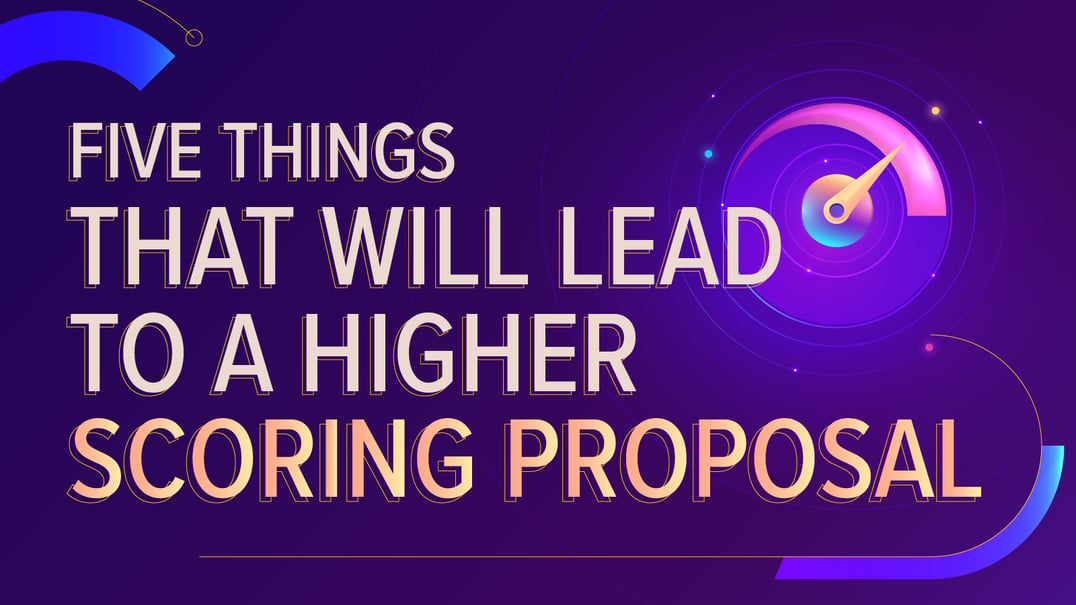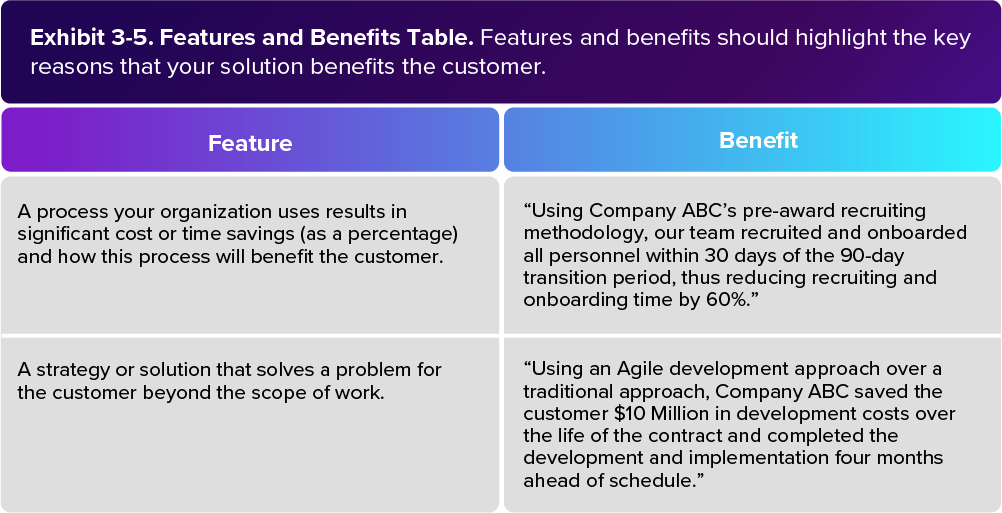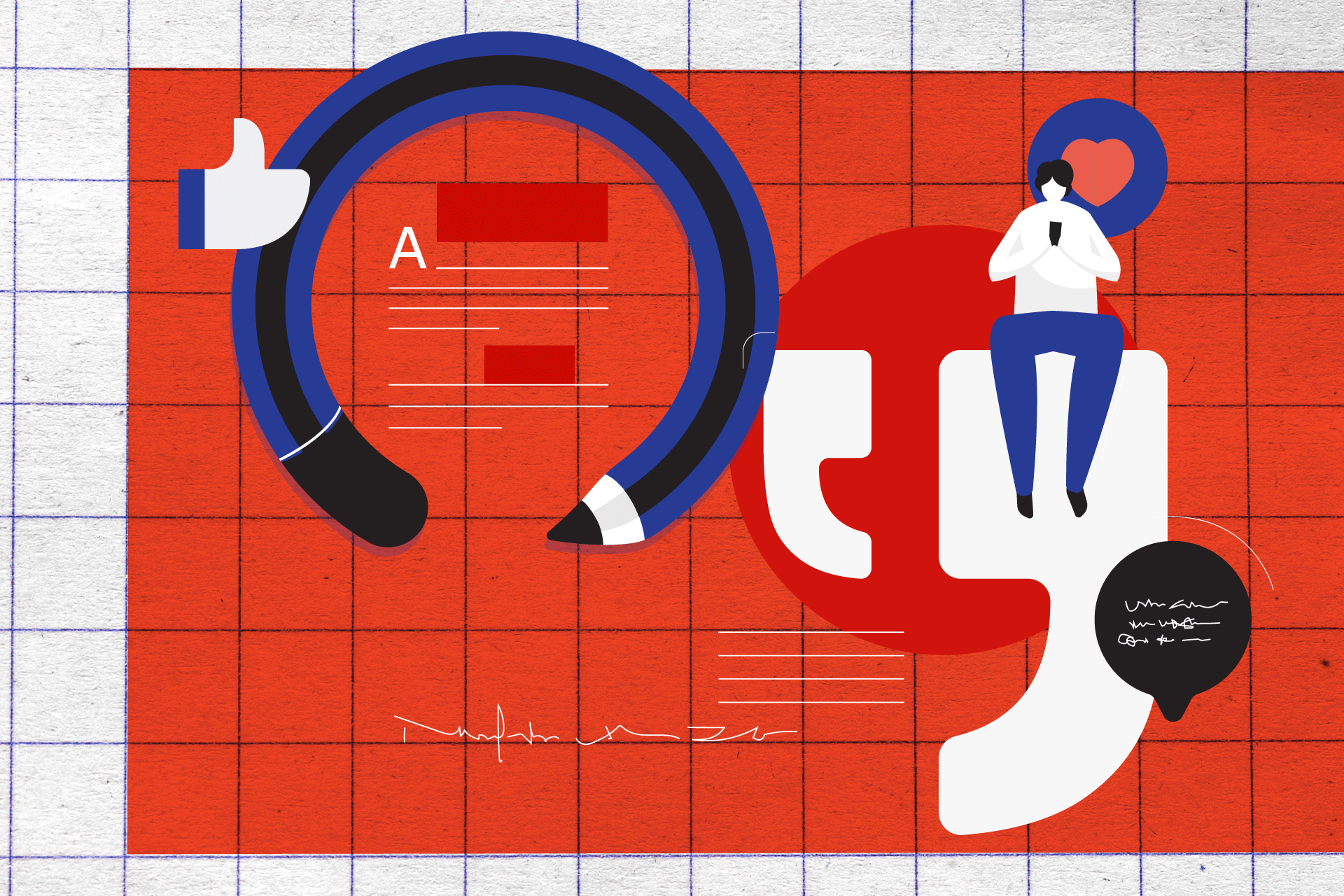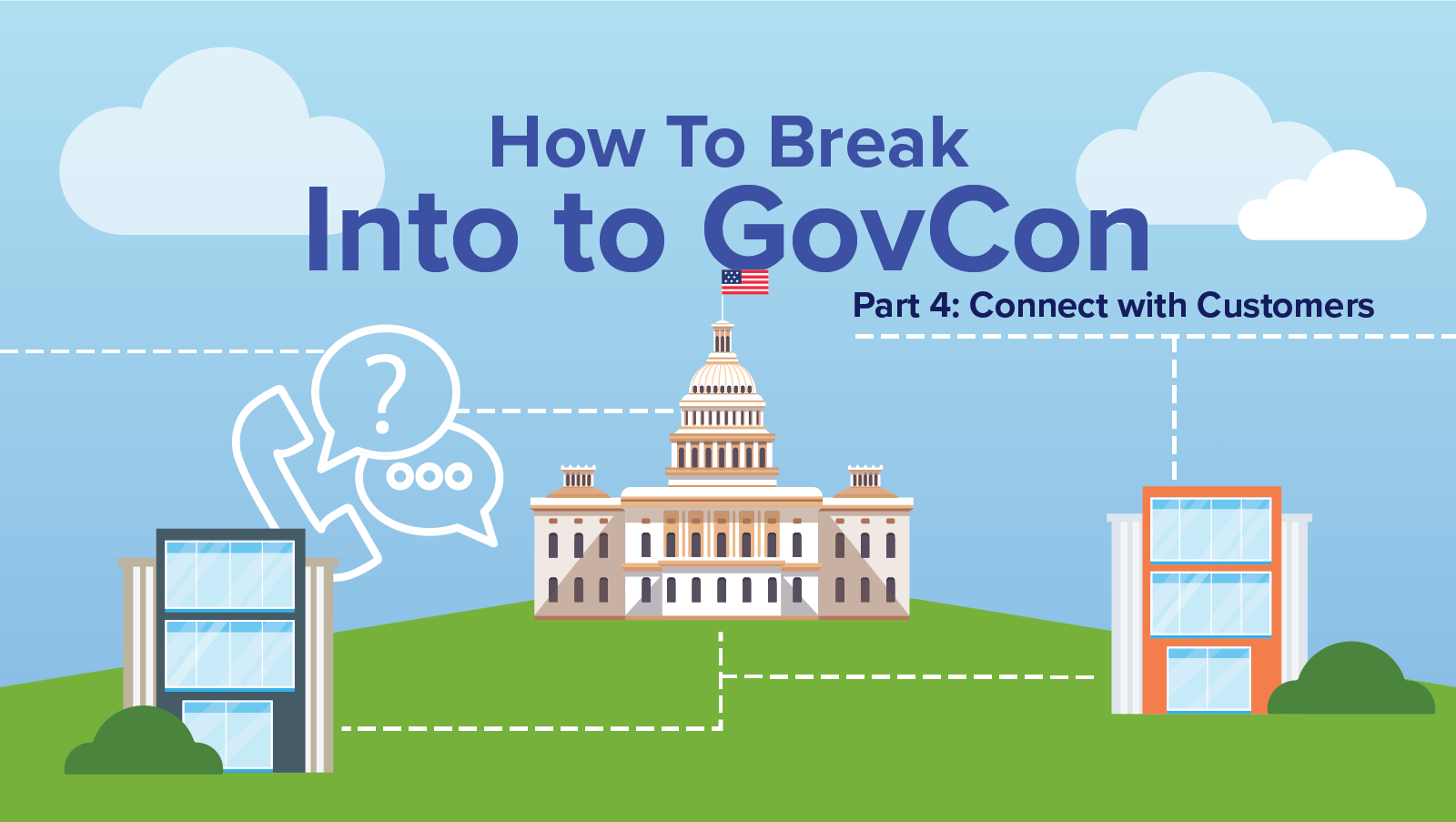
In this article, we will cover five things that instantly lead to a higher-scoring proposal during the evaluation process.
These items—in conjunction with your organization’s knowledge, experience, and capabilities—can quickly place you on top of the evaluator's shortlist. While some of the things listed in this article may be considered trivial to the experienced proposal professional, they can often be overlooked during the proposal development process.

1. Maintain compliance with the requirements
Compliance is the single most basic and important evaluation factor for the proposal evaluation process.
Miss a single requirement, no matter how small, and you are at the mercy of the evaluators. It is a very disheartening experience to learn that after spending weeks or months of hard work developing a proposal response, you were non-compliant with the Request for Proposal (RFP) requirements and therefore ineligible for the award—speaking from experience, of course.
So, you may ask, how do I maintain basic compliance with the proposal requirements? Simple, create a baseline structure by arranging your proposal in the manner the Government wants to evaluate the response. In this structure, 99% of the time consists of the following layers.

Section L – Provides instructions to the contractor on what information must be included in the proposal response. This includes the requirements for various volumes, sections, subsections, and more.
Section M – Provides information on how contractors will be evaluated. This section provides further guidance on how your company’s response and other bidding entities' responses, will be scored and compared.
Section C – Most commonly referred to as The Performance Work Statement (PWS)/Statement of Work (SOW) provides detailed information on specific requirements including the background, scope, objectives, and overview of the work.
Additionally, pay close attention to all “Contractor Shall” and/or “Contractor Will” statements. These types of requirements are very easy to miss, leading to a reduced score, or outright disqualification. One exercise that will help keep you on track is to develop and maintain a compliance matrix. A thoroughly developed compliance matrix can help identify gaps, weaknesses, and other areas of the RFP that may not have been addressed.
2. Create a proposal that is abundant with features and benefits that the Government can consider as strengths.
Compliance alone will not win your company the contract award. In addition to achieving compliance with the RFP requirements, you must demonstrate what sets your organization apart from the competition and why you are the right choice for the job.
This is achieved by providing an abundance of quantifiable features and benefits in your response that can be considered strengths by the Government. Here are some examples of quantifiable features and benefits:
- A process your organization uses results in significant cost or time savings (as a percentage) and how this process will benefit the customer. “Using Company ABC’s pre-award recruiting methodology, our team recruited and onboarded all personnel within 30 days of the 90-day transition period, thus reducing recruiting and onboarding time by 60%.”
- A strategy or solution that solves a problem for the customer beyond the scope of work. “Using an Agile development approach over a traditional approach, Company ABC saved the customer $10 Million in development costs over the life of the contract and completed the development and implementation 4 months ahead of schedule.”
Features and benefits can be presented or highlighted in a variety of ways such as features and benefits tables, and overarching theme statements to highlight the strengths or callout/hot boxes related to the section.
Sprinkled throughout the response, these types of quantifiable features and benefits will further solidify your organizations standing with the evaluators. Below is an example of a features and benefits table.

3. Provide the Government with an innovative solution to their problem
Another strategy a contractor can apply to gain crucial points with the evaluator is to provide an innovative solution to a problem the customer has faced in the past or may encounter during the proposed period of performance.
Presenting a solution that saves the customer time, money, or manpower will further solidify your position at the top of the list. Innovative solutions that provide efficiencies and effectiveness in contract performance using emerging technologies, tools, and processes are some of the things in Government is looking for during the evaluation process.
Remember these solutions don’t have to cost your company money to be innovative. However, if there is an added cost, the evaluators will keep this in mind while evaluating your solution and price compared to what your competition has proposed.
A real-life example.
I recently encountered an example of an innovative solution while assisting a client in developing and submitting a proposal. This project encompassed the design, development, construction, and implementation of a steam/energy generation plant in addition to decommissioning the older facility. This multi-billion-dollar steam/energy generation plant will support hundreds of buildings and thousands of students and staff.
The customer provided specifications on the components used in the previous facility, their current levels of efficiency, a list of difficulties/issues/problems faced throughout the life of the plant—as well as the desired energy efficiency they wanted to reach. We presented a solution that exceeded the customer’s energy efficiency goal by at least 40%, a proposed resolution to individual problems as part of the solution that would go on to save the customer millions of dollars in energy costs over the next 20 years!
Providing this solution cost our client no money, and the client was able to propose various methods of achieving energy efficiency beyond the scope of work at no additional cost to their end customer.
4. Perform periodical reviews of your response
The industry standard Pink, Red, Gold, and White Glove reviews are designed to measure the level of development of your proposal response and usually occur in intervals or stages.
Conducting these reviews helps refine and improve the quality, strategy, and overall message of the proposal response. These reviews allow proposal professionals to take a step back from our role as writers and managers and think like the customer when reviewing the response. Review your response as a team: include your subject matter experts (SMEs), writers, teaming partners, consultants, or anyone who is knowledgeable on the subject matter that can provide objective and constructive feedback.
While the reviews help refine and improve our overall response, it is essential to conduct a final compliance check or audit of the requirements. The compliance check/audit will ensure that you have carefully and thoroughly addressed all the proposal requirements in the RFP. Some tools that you can use to perform this compliance check include an integrated compliance matrix, evaluation scoring tree, Government provided evaluation checklist and more.
Performing periodical reviews and compliance audits of your response will result in a fully compliant and strong proposal and can help you to squeeze a few extra points from the evaluator.
5. Provide a comprehensive corporate experience or past performance write-up
In addition to compliance, innovative solutions, and features and benefits, the evaluators want to see how you back up all the claims made in the response.
This is where past performance and corporate experience can come into play. These are the sections where we can tell the story about the quality of product or service, cost control, timeliness of performance, business relations, customer satisfaction, lessons learned, best practices, and other performance-related information. Providing the customer with a Contractor Performance Assessment Reports (CPARs) to validate the information provided in the past performance or corporate experience section will aid in substantiating the information presented. The goal is to persuade the evaluators that your organization has successfully performed the contract requirements, exceeded customer expectations, and will continue to provide that level of service on the contract.
Bonus Tip: You can use some of the quantifiable information provided in the past performance as proof points throughout the response.
Conclusion
Never settle for a “good enough” response; the evaluators can tell from your submission if your organization has performed its due diligence in responding to the requirements.
Applying these tips to any proposal response will help your team produce comprehensive, compelling, and compliant proposal submissions and help lead you to the top spot during the evaluation process. Remember, a proposal that is simply “good enough” to submit may not be “good enough” to win.








